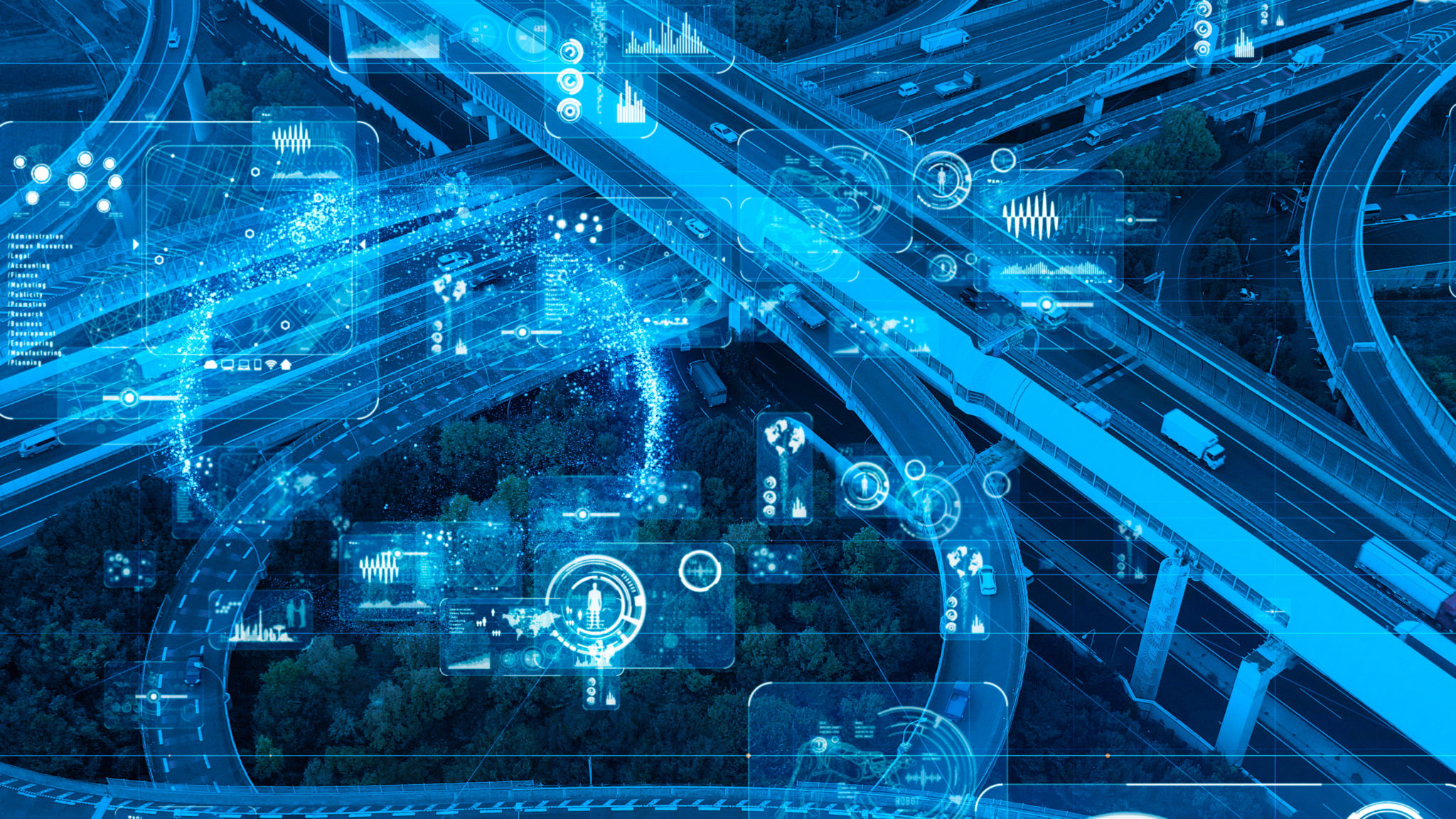

On Dec. 22, 2021, TuSimple completed the first-ever fully autonomous semi-truck trip on open roads without any human intervention. While the 80-mile run from Tucson to Phoenix Arizona only lasted 80 minutes, it marked a major milestone for the trucking industry, especially considering the current truck driver shortage. The Harvard Business Review found that there are a mere 2.4 million truck drivers in the United States, but those drivers are responsible for moving over 70% of U.S. freight by weight. Eventually, the use of autonomous trucks could help address the trucker shortage, which does raise a question. Will drivers be replaced by automation? In short, it’s highly unlikely. The future of trucking will still depend on the work of dedicated drivers for years to come.
While autonomous cars have been in the works for quite a while, semis are actually much better equipped for automation.
While automated cars have to be capable of driving through complex cities and winding local roads, semi-trucks tend to drive very predictable routes, as they spend a great deal of their time on highways. Because of this, they face far fewer unpredictable variables such as pedestrians, bikers, and scooter riders, making it easier for automated systems to navigate.
At their core, autonomous vehicles, whether they be cars or large trucks, often rely on the same technology. Cameras, radars, and Light Detection and Ranging (LIDAR) devices send sensor data to a computer in the vehicle, which is used to control the car or truck. One of the main differences is the vehicle size. Trucks have far more space for technology, allowing for more powerful computers and a better view for sensors, which can be positioned higher off the ground.
In general, people are wary of autonomous vehicles; they don’t like the idea of handing full control over to technology. Businesses, on the other hand, are far less opposed.
With the rise of autonomous vehicles, many truckers worry that their jobs could be at stake. However, the future of trucking will still require drivers for many years for a handful of reasons.
The Society of Automotive Engineers defines five levels of automation for autonomous vehicles, ranging from 0, no automation, to 5, complete automation. The higher the level, the less human interaction is involved.
Level 0: No Automation
Your standard vehicle with no bells and whistles.
Level 1: Driver Assist
These vehicles offer some basic automation features, such as cruise control and lane-keep. Most cars you’ll see today offer level 1 automation.
Level 2: Partial Automation
The driver must keep their hands on the wheel at all times, but the vehicle will help control steering and speed, make sure the vehicle stays in the center of the lane, and ensure the proper distance is maintained between the vehicle and those in front of it. While this is not standard in cars today, you can find this level of automation on the road.
Level 3: Conditional Automation
The vehicle is able to drive itself, but it has its limits, and the conditions must be ideal. So, a driver still must be behind the wheel at all times in case there are any less-than-ideal scenarios to deal with (such as poor weather).
Level 4: High Automation
These vehicles can drive without any human interaction but will not operate under certain conditions.
Level 5: Full Automation
Level 5 vehicles don’t require steering wheels or pedals, as they can drive under any conditions without human interaction. However, while the future of trucking may include level 5 automation eventually, we are still very far away from that point.
While the concept of level 5 automation is certainly intriguing, we’re nowhere near seeing it hit the mainstream. Currently, investments into level 2 and level 3 automation, which still require a driver at all times, are much more common. In all likelihood, the future of trucking will look very similar to planes today. While planes may have the ability to fly themselves for the most part, there will always be a pilot in the cockpit in case of uncertain weather conditions, equipment malfunctions, or other emergencies.
“Truck driver” is a multifaceted job, and driving trucks is just one part of it. To start, you also have to load, secure, and unload cargo, and at the moment, this technology is far from being widespread. You also have to deal with any maintenance issues. Even though sensors on the truck can detect many of these things, it still takes a human to change a tire or fill the vehicle with fuel.
Another factor that will limit the use of fully automated trucks in the future of trucking is that this technology was designed primarily for longer, interstate trips. This is good news for those working in the trucking industry, as the Harvard Business Review found that only about one-fourth of heavy vehicles are used in long hauls, while about half are used for short distances (50 miles or under). Even if all of the other barriers to autonomous trucks were to be removed, only a quarter of drivers would be impacted, and that impact could end up being a positive. Autonomy might take over the long distances, allowing drivers to stay close to home, driving only the last few miles for long-haul loads that are waiting at local terminals.
There are also a lot of laws and regulations surrounding truck driving, and changing those to keep up with autonomous vehicles will take some time. Our infrastructure simply isn’t prepared to handle things like servicing autonomous trucks. Plus, every state has a different idea on how to regulate these vehicles, some even bar the use of level 4 automation.
While we may not be automating trucks in the near future, there is one thing truck drivers can automate to save a great deal of time: filing Form 2290 and paying the Heavy Vehicle Use Tax (HVUT). With i2290, all you have to do is create an account, and our software will guide you through a short series of questions, then automatically calculate your taxes for you. Once you’re done, you’ll receive an IRS-stamped Schedule 1 in minutes, which you can always access online.
Ready for a better way to file and pay Form 2290? Create an account with us today!
We're confident that your experience with INSTANT 2290 will be the best Form 2290 e-filing you've ever had. If for any reason you are not satisfied, just contact support for a full refund. No questions. No conditions. Create your account to get started!